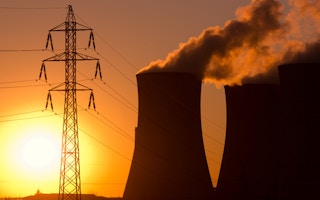European researchers have confirmed once again that there is only one effective way to limit climate change: carbon dioxide emissions from fossil fuels must be reduced to zero.
There are other greenhouse gases and atmospheric pollutants that contribute to global warming, and it would certainly be good to reduce these.
But cuts in atmospheric methane emissions from cattle, or black carbon from diesel engines, coal mines and coal-burning cooking stoves, or other pollutants would not in the long run make a significant difference.
These pollutants are short-lived. They stay in the atmosphere from days to a decade, while CO2 lasts thousands of years. And if CO2 emissions were reduced sharply, some of those short-lived pollutants would in any case be reduced along with them.
Climate impact
Joeri Rogelj, of the International Institute for Applied Systems Analysis (IIASA) in Austria, and fellow climate impact scientists report in the Proceedings of the National Academy of Sciences (PNAS) that the benefits of limiting what are known as short-lived climate forcers (SLCFs) would be real in terms of public health, but small in terms of climate impact compared to the mitigation of CO2 emissions.
“
Although near-term action on short-lived climate forcers can help reduce warming in the coming decades, and also provides other societal benefits, such as clearer air, it will not buy us time for delaying the reductions in carbon dioxide emissions that are required to stabilise the climate at safe levels
Joeri Rogelj, climate scientist, International Institute for Applied Systems Analysis
“Stabilising climate at any temperature means that, at some point, global CO2 emissions have to become zero,” Rogelj says. “Although near-term action on short-lived climate forcers can help reduce warming in the coming decades, and also provides other societal benefits, such as clearer air, it will not buy us time for delaying the reductions in carbon dioxide emissions that are required to stabilise the climate at safe levels.”
The study follows only days after the launch of the Intergovernmental Panel on Climate Change’s synthesis report, which stresses the urgency of reducing carbon dioxide. Other research within the last year has reached the same conclusion.
But Dr Rogelj says that, prior to the study published in PNAS, there has been only fragmented information available about the joint climate benefits of reducing greenhouse gas and air pollution.
The new research looks at the connections between CO2 and the other, shorter-lived pollutants. It shows that although it is important to limit pollutants such as methane and hydrofluorocarbons, the impact of such measures − in both the short and long terms − becomes small in scenarios that keep global warming to 2°C above pre-industrial levels.
And steps to reduce black carbon have less significance because this will dwindle in any case with any reduction in CO2 emissions.
Complex issue
“Because information was so fragmented, misinterpretations have been common,” Dr Rogelj told the Climate News Network. “Given the complexity of this issue, this is not surprising.
“With our integrated analysis, we hope to provide clearer and more consistent scientific guidance for policymakers on this issue. Our results and discussion clearly highlight the identified synergies, trade-offs and pitfalls.”
Hans Joachim Schellnhuber, director of the Potsdam Institute for Climate Impact Research, and one of the co-authors of the report, emphasises the same point.
“The one and only thing that can avoid the bulk of risks that would come with unbridled climate change is rapid CO2 reduction,” he says. “Hopes that cutting other emissions would do a large part of the job now turn out to be misguided.”










